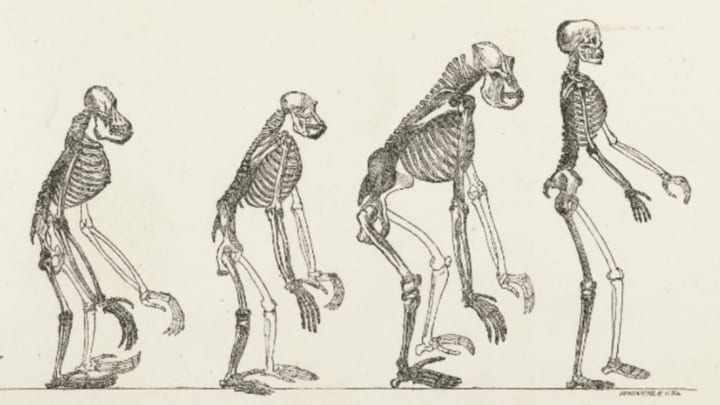We May Have Split from Our Ape Relatives 2 Million Years Earlier Than Thought

Researchers say the evolutionary split between humans and other apes may have happened 2 million years earlier than previously believed. The findings were published in the journal Nature.
The timing and location of specific events in primate evolution are the subject of some debate among scientists. Many believe that the great apes (including humans) first evolved in Eurasia, a belief supported by the scarcity of great ape fossils found in Africa. But in the last few decades, other researchers have found Ethiopia’s Chorora Formation to be a rich source of fossilized primate remains—including those of Chororapithecus abyssinicus, an early gorilla ancestor.
The authors of the current study say the presence of C. abyssinicus in Africa proves that human and gorilla lineages must have split there. They also say the age of the C. abyssinicus fossils prove that the split must have happened much earlier than was previously believed.
These conclusions are drawn from analysis of the rock and sediment surrounding nine fossilized C. abyssinicus teeth. One technique called lithostratigraphy examined the order and placement of layers in the rock to estimate how old they were. The team used chemical fingerprinting and Argon dating (a process similar to carbon dating), as well as magnetostratigraphy, which measures how rock samples respond to magnetic fields. The results of all these tests marked the teeth as about 8 million years old, suggesting that gorillas are a more recent development than scientists had previously thought.
Gen Suwa
"Our new research supports early divergence: 10 million years ago for the human-gorilla split and 8 million years ago for our split from chimpanzees," study co-author Giday WoldeGabriel said in a press release. "That's at least 2 million years earlier than previous estimates, which were based on genetic science that lacked fossil evidence."
While impressive, these conclusions are still pretty speculative. Remains from another early primate ancestor, Nakalipithecus nakayamai, were also found in Africa, but scientists aren’t sure where in the family tree to put them. At about 9.8 million years old, N. nakayamai may be a common ancestor of humans and other apes, but it might also be a very early gorilla. If it’s the latter, then gorillas must have been around 9.8 million years ago. If it’s the former, the split was more recent, around 8 million years ago.